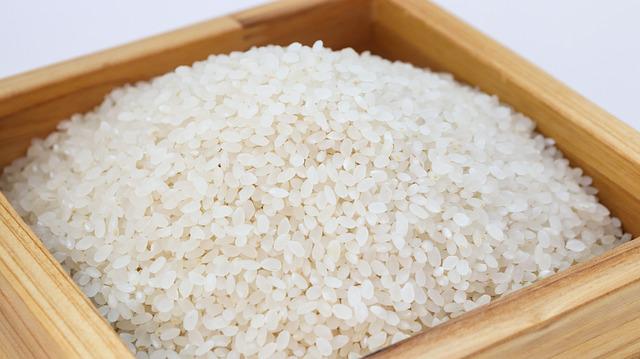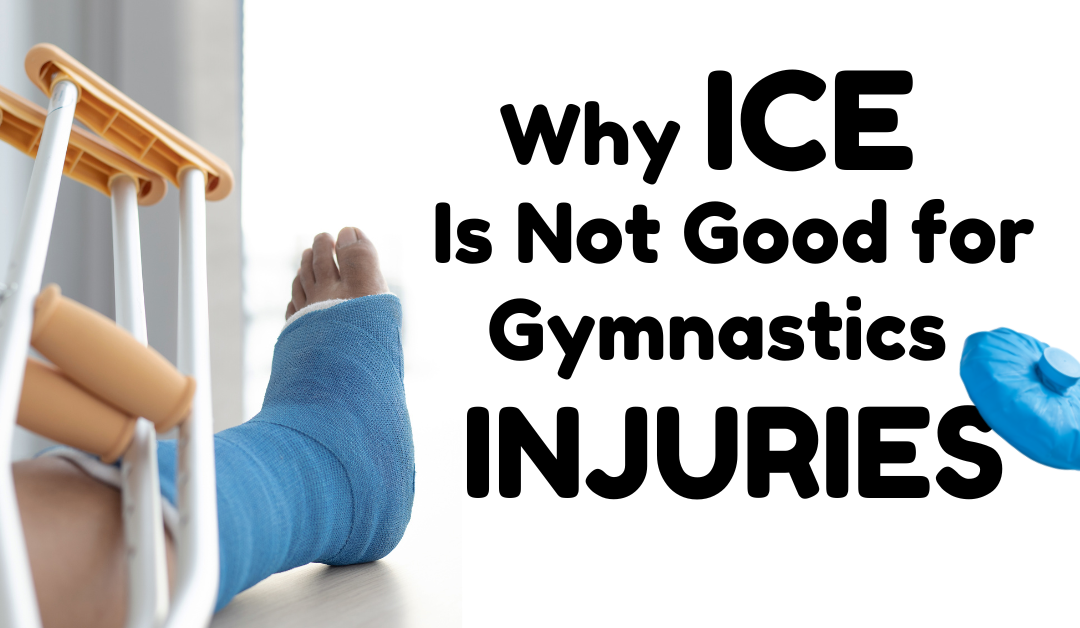We’ve all heard of rice.

No wait, that’s not right. R.I.C.E.
Rest
Ice
Compression
Elevation
It’s been the go-to protocol for acute gymnastics injuries since the 70s. BUT, the original creator of the protocol (actually not-so-recently) recanted the “ice” part of this protocol!
Dr. Gabe Mirkin, the man behind R.I.C.E., conducted further research, which concluded he was actually WRONG about ice as a long-term injury solution. And props to him! It’s not easy to admit you’re wrong, especially when the original protocol is still so widely accepted.

And the crazy thing is? He recanted this in 20–freakin–13. Nearly 10 years ago!!
So if you’re like me, and you’re hearing about this WELL after the updated study, here’s a breakdown of why I believe these findings should have been much more widely publicized. Especially in the gymnastics community.
And hold up, don’t get upset. Ask any gymnastics coach, and we’ll tell you we’ve seen how ice for gymnastics injuries is effective at reducing pain, inflammation, and swelling. This hasn’t changed––it’s still sort of true.
However, the study gets more in depth about how pain, inflammation, and swelling are uncomfortable but normal parts of healing. Ice numbs these feelings, which is why we like to use it. But while it might make the healing process more comfortable, it could also be slowing it down.
Pain tells the body that something is wrong.
If a gymnast’s ankle is broken but they can’t feel it, tumbling on it for another week probably isn’t going to make it better. Even if it’s not hurting them, it doesn’t make their bone any less broken.
Pain can tell the body when to take things easy, but it can also tell a gymnast’s body it needs to start the healing process.
When ice numbs the pain, our bodies’ don’t recognize the full severity of the issue, and so it warrants a slower reaction.
No pain, no healing response.
Inflammation tells the body where that something is going wrong.
Pain can sometimes be a tricky thing to put a name to. Have you ever had a gymnast struggle for words when asked if it’s a “pinching, stabbing, or burning” type of pain?
Luckily, inflammation is more specific. It paints a big bullseye on the injury that tells the body the address of the accident. Send in the white blood cells!
When we use ice for gymnastics injuries, the inflammation is reduced, making the site (and more importantly, the scope) of the injury a little less clear. A direct route to the injury site is the fastest way to heal.
On his website, Dr. Mirkin sums it up by saying, “Anything that reduces inflammation also delays healing.”
No inflammation, no reinforcements.
Swelling prepares the site of injury for healing.
Swelling makes more room for the lymphatic system to remove the damage at the injury site, leaving it clear for the healing agents to do their business.
There’s a lot that needs to be done to fix up the injury, so those healing agents need all the space they can get.
The use of ice for gymnastics injuries reduces swelling, thereby reducing the four-lane highway into a single street leading out of Injury City. They’ll still get the cleanup done, but the traffic jam will make it happen a little slower.
No swelling, no quick cleanup.
Why are we so tempted to numb the pain?
Although pain, inflammation, and swelling are things we’d all like to avoid, it’s only because they are synonymous with an injury. The injury is what we all want to avoid. (Duh!) Not the symptoms.
But once the injury is here, we’ve got to deal with our gymnast’s natural responses to it. And in this case, no pain, no gain actually does apply.
So when should you use ice for gymnastics injuries?
You might be tempted to use it during a competition or a practice when a relatively minor injury occurs. The idea of numbing up the injury site to get them through the gymnastics meet might be tempting.
However, be aware that studies show “the cooling may help to decrease pain, but it interferes with the athlete’s strength, speed, endurance and coordination (Sports Med, Nov 28, 2011).”
And none of that is important for gymnastics, right? Just kidding. My point is, if it’s going to interfere with the gymnast’s performance––especially their safety––it may be better just to sit this one out.
All that said, in the rare instance the gymnast has suffered a truly severe injury with unbearable pain, absolutely give them some relief. That’s just being a good human. Something to get them through to the hospital isn’t going to crush them in the long run.
To view Dr. Mirkin’s new comments on ice, click here!

